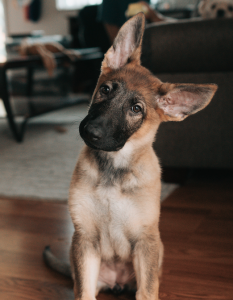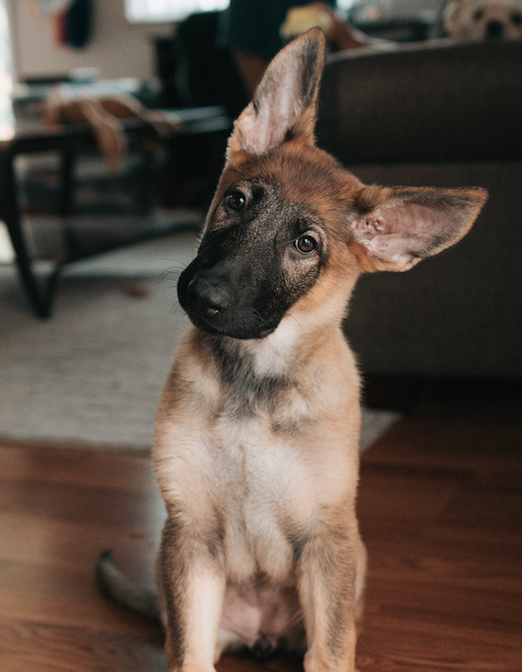If your pup regularly gives you the I-simply-don’t-know-what-you’re-saying side eye, it’s possible that you’ve been inadvertently confusing your dog. And it’s not your fault! There are a few easily overlooked gaps in doggy-human communication that could be giving your pooch pause.
By making yourself clear—and avoiding some common mistakes—you can be sure that you’re not confusing your dog. To aid you in your quest, we have a few simple changes to help clear things up.

Simplify your training sessions
Although dogs have evolved to be amazing students, they still require the right conditions to focus and learn. To make sure that every training session is as effective as possible, clarity is crucial.
Here are a few ways to simplify your training sessions and avoid confusing your dog:
- Train in a distraction-free area
- Choose one-syllable words for commands, such as “sit,” “stay,” “drop”
- Pair words with simple hand signals
- Focus on one command at a time
- Keep training sessions short
- Schedule regular training sessions
With these small adjustments, you will be much less likely to confuse your dog during training. Keeping sessions clear, laser-focused, and quick will ensure that your dog doesn’t feel overwhelmed or unsure of what you’re asking.
And remember, training isn’t a one-and-done deal. To avoid confusing your dog with commands they learned a few months or years ago, you’ll want to keep up with regular training sessions.
A great way to maintain training is to tell your local Pet Sitter which commands your pup is currently learning. That way, they can work in a few “sits” and “shakes” while they care for your pupper.
For more training advice, check out our Top Dog Training Tips!
Be intentional with rewards and punishments
One thing to keep in mind about that doggy brain is that it’s hardwired for simple associations.
Positive reinforcement training is a brilliant way to increase communication between you and your pup. But here’s where things can get confusing: your reward system isn’t clearly linked to the behaviours you want from your dog. For instance, you might be giving your dog treats too infrequently during training, or too late after they’ve completed the command. Without immediate reward for the task, you’re likely confusing your dog and slowing down the training process.
This can happen with punishments, as well. For instance, if you come home to a destroyed couch, it’s entirely understandable that your first response would be to tell your dog “no.” But, in all likelihood, they chewed up those cushions hours ago and have done loads of other activities since then. They won’t know if you’re punishing them for barking at the courier, lying on your bed, or greeting you warmly. For them, the clear connection isn’t there.
So, as much as you can, reward your dog’s good behaviour in the moment you see it. And, if they haven’t been the best doggo while you were away, focus more on preventing the bad behaviour than punishing it when you get home.
Recognise when inconsistency might be confusing your dog
Let’s say you’re working on your dog’s habit of begging at the table. You want your pupper to avoid human food and let you eat in peace, but sometimes, those puppy dog eyes are just too adorable. Plus, when you have guests over, someone is inevitably going to cave and give your dog a scrap or two.
This is a great example of how inconsistency might be confusing your dog. Because, even if you only choose to feed them from the table on holidays or special occasions, they’ll assume that every day is a new opportunity for some tasty table scraps.
Day-to-day, you might be falling into the inconsistency trap without even realising it. For example, you might sometimes allow your dog to nibble on your fingers during play and then tell them not to do the same to your houseguests. Or, perhaps you’re working on getting your dog to stop jumping on strangers but then invite a big bear hug yourself every once in a while.
And, look: we’re all human. Some days we follow the tips to stop our pooch from begging at the table. Other days, we give in. That doesn’t mean that your pupper will never learn the rules that you set out to teach them. But, any inconsistencies that are confusing your dog can elongate the learning process.
Try to remember that English is their second language!
If you’ve ever tried watching a television show in another language, you probably realised that everything sounds like one long jumble of words.
And the same is true for your dog. According to a 2018 study in the journal, Frontiers in Neuroscience, dogs try their best to pick out recognisable words or sounds. But, a lot of our speech is just plain indistinguishable to those doggy ears.
A good example of how language could end up confusing your dog is with names. When we give our dogs cute names that happen to sound like common commands, we often get a look of confusion.
You can almost see the gears in their head spinning as they try to decide whether you told them “no” or called them “Milo.” Here are a few other names that might be confusing your dog:
- Anything starting with soft consonants or vowels, which can be difficult for dogs to distinguish
- Names that sound like common commands, such as Pip/Sit or Coco/Come
Remember to always speak clearly to your pup, and as we mentioned earlier, consider adding hand signals to your training sessions. And, maybe avoid confusing your dog with a name that sounds like their commands!
Have you picked up on any habits that you’re doing that are confusing your dog?
Don’t feel bad—many of us do things that confuse our pups without even realising it! By making some simple adjustments, like streamlining the training process and staying consistent with rules, we can help our dogs stay up-to-speed.
And, if you’re working on undoing some of the ways that you’ve been confusing your dog, make sure to let us know in the comments!

